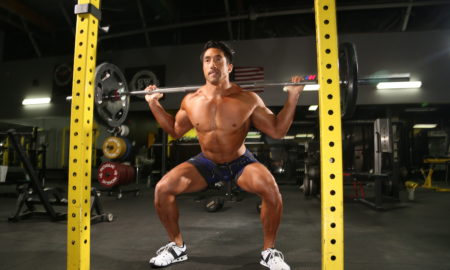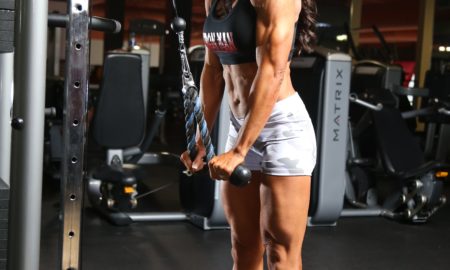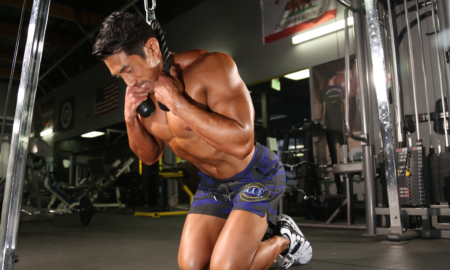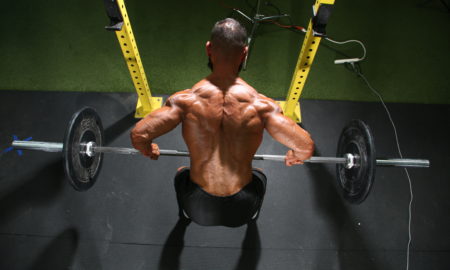Many readers of this column have been training for many years. Most have trained heavy and often, starting in high school or college. Other readers actively participate in great recreational sports—skiing, snowboarding, surfing, cycling, running or hiking. They sometimes incur injuries, and the knee is one of the most common sites of injury. A very common injury is a tear of the medial or lateral meniscus.
The major bone of the lower leg is the tibia. From the front the tibia looks somewhat like a trumpet standing on end. Instead of the broad horn at the top being open like a trumpet, though, it’s solid bone, and the bone creates a flat surface known as the tibial plateau. Two C-shaped pieces of cartilage sit on top of the tibial plateau that are known as the menisci. They help the thigh bone—a.k.a. femur—move on the tibial plateau. They work like a shock absorber.
The menisci can tear from a sudden shearing force, such as changing direction in football, soccer or hockey, or from falling during skiing or snowboarding. Or they can be worn down and then tear from such repetitive actions as running long distances.
Twenty years ago most patients who were diagnosed with a meniscus tear would have had arthroscopic surgery to remove the torn portion of the meniscus, and in some cases the tear could be repaired. The tears were identified by magnetic-resonance imaging, or MRI, which was then a rapidly developing imaging tool in health care. For some patients the arthroscopic procedures were fantastic, and their symptoms improved immediately after surgery. Others, however, did not improve. As it happened, the meniscus tear might not have been the cause of pain. It may have been present for years without causing pain. When discovered, it was assumed to be the cause of pain. If the pain was being generated by the lining of the joint capsule—the synovium—it could resolve, while the meniscus tear persisted without pain.
Today 90 percent fewer patients have arthroscopic surgery for meniscus tears than a few years ago. Most patients can rehabilitate their knees even if the meniscus tear causes pain. Many of the rehabilitative exercises are common gym exercises. If the muscles surrounding the knee are strong, the knee develops a degree of dynamic stabilization. Once the pain lessens, the knee can benefit from squats, leg presses, leg curls, calf raises and stiff-legged deadlifts or Romanian deadlifts, which develop the quadriceps, hamstrings and calf and groin muscles.
Rehabilitative squats are typically done without weight and not done deep; that avoids stressing the meniscus. Once the knee can tolerate the bodyweight squats, you can move to an empty bar. Leg curls should begin with light weight. Calf raises should start without weight too. Again, as the knee tolerates a greater training load without pain or with much less pain, continue to add weight. You can add stiff-legged deadlifts or Romanian deadlifts with light weight at that time.
The leg extension is not a great movement because of the stress it places on the kneecap. Avoid it for any purpose besides a local warmup of the knee with very light weight for one set before your leg workout.
Once the other exercises have progressed, you can carefully add lunges, preferably lunge walking. Seated leg curls and hypers will help your knee hyperextend, which can stress the meniscus. So use caution with those exercises.
Most rehab exercises are easily done in the gym. Here’s hoping you can keep your knee strong and stable so you can keep training and participating in all of your recreational sports too.
Editor’s note: Visit www.SoftTissueCenter.com for reprints of Horrigan’s past Sportsmedicine columns that have appeared in IRON MAN. You can order the books, Strength, Conditioning and Injury Prevention for Hockey by Joseph Horrigan, D.C., and E.J. “Doc” Kreis, D.A., and the 7-Minute Rotator Cuff Solution by Horrigan and Jerry Robinson from Home Gym Warehouse, (800) 447-0008, or at www.Home-Gym.com.




















You must be logged in to post a comment Login